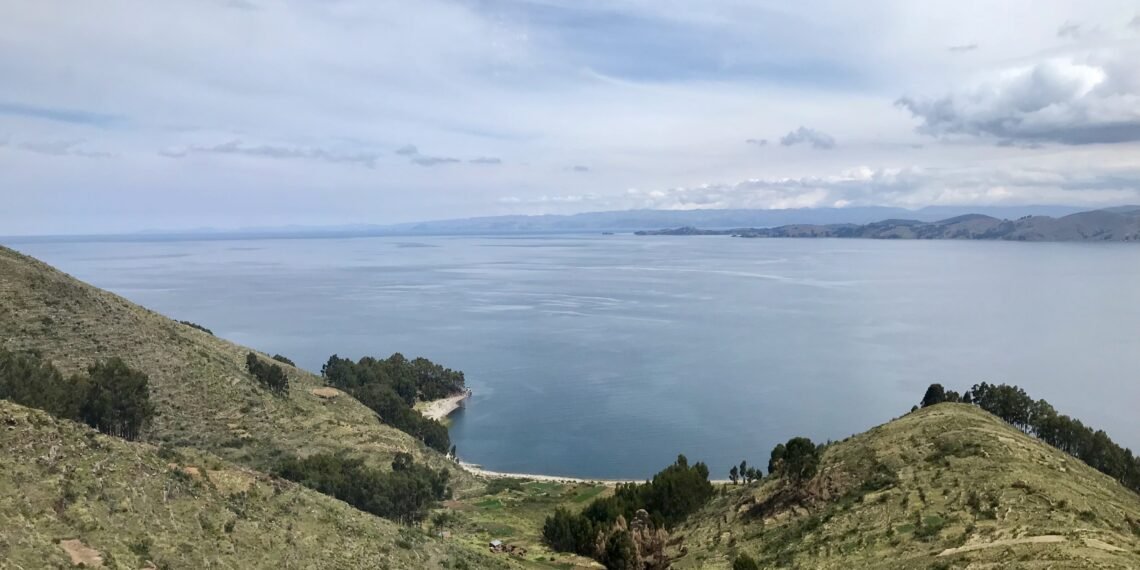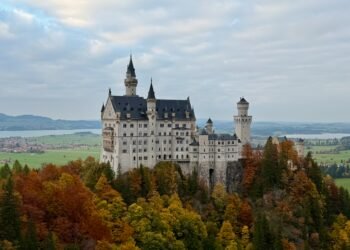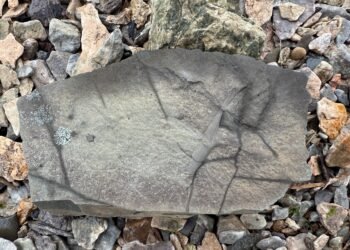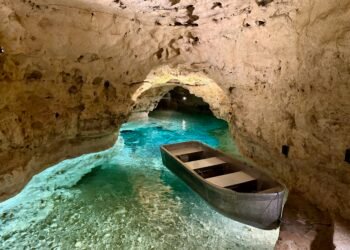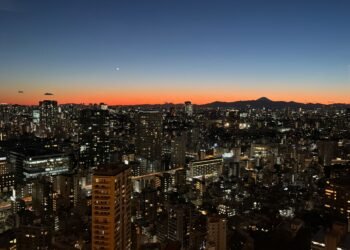Originally published October 26, 2024 • Last updated September 20, 2025
High in the Andes, on the border of Bolivia and Peru, Lake Titicaca is South America’s largest lake and the world’s highest navigable lake – a place where secrets stranger than myth meet science. From altitude challenges and unique ecosystems to ancient traditions and legends, join me as I uncover the secrets that make this lake a wonder of culture and discovery.
1 Journey to Legendary Lake Titicaca
December in La Paz, Bolivia, had been an adventure in itself. With its vibrant markets, bustling streets, and thin mountain air, this Andean capital captivated me from the start. But my mind kept drifting to the next leg of my journey – the promise of reaching Lake Titicaca.
This wasn’t just any lake. It was the highest navigable body of water in the world, a massive, glittering mirror on the border of Bolivia and Peru. I’d read about this storied lake before, a site of ancient legends and scientific intrigue, and my head was full of questions. How did this lake form so high in the mountains? What creatures could live in such an extreme environment? What was life like for the communities at the lake’s edge, and how did they weave its waters into their traditions?

The journey would take me from La Paz toward Puno, Peru, winding through the Andean terrain. After two hours, the landscape began to shift, and the lake came into view – a blue expanse that seemed to stretch forever, framed by distant peaks. It was mesmerizing to see this massive lake appear like an oasis amid mountains. As the bus rolled on, my curiosity grew, ready to uncover the mysteries of Lake Titicaca, one scenic mile at a time.
2 Quick Facts about Lake Titicaca (Altitude, Depth & Location)
- Altitude: 3,812 metres (12,507 feet) above sea level.
- Location: Spans the border of Peru and Bolivia.
- Unique Features: The largest lake in South America and the highest navigable lake in the world.
- Length: Approximately 190 kilometres (118 miles).
- Width: Up to 80 kilometres (50 miles).
- Depth: Up to 281 metres (922 feet) at its deepest point.
- Cultural Significance: Sacred in Inca mythology, believed to be the birthplace of the sun.
3 Geology and Formation of Lake Titicaca and the Andes
Seeing Lake Titicaca for the first time felt surreal, almost like glimpsing a portal to another world. Surrounded by mountains, the lake seemed impossibly large, stretching as far as the eye could see. Its waters shimmered under the midday sun, nestled among the peaks of the Andes. But as beautiful as it was, I couldn’t help but wonder: how did such a vast body of water end up so high above sea level?
Lake Titicaca Altitude
At 3,812 metres (12,507 feet), Lake Titicaca is the world’s highest navigable lake – higher than the Great Lakes of North America and even Lake Baikal in Russia. This high elevation affects the climate, leading to cooler temperatures, and visitors often need time to acclimatize due to lower oxygen levels, which can sometimes cause altitude sickness with symptoms like headaches, nausea, and dizziness.
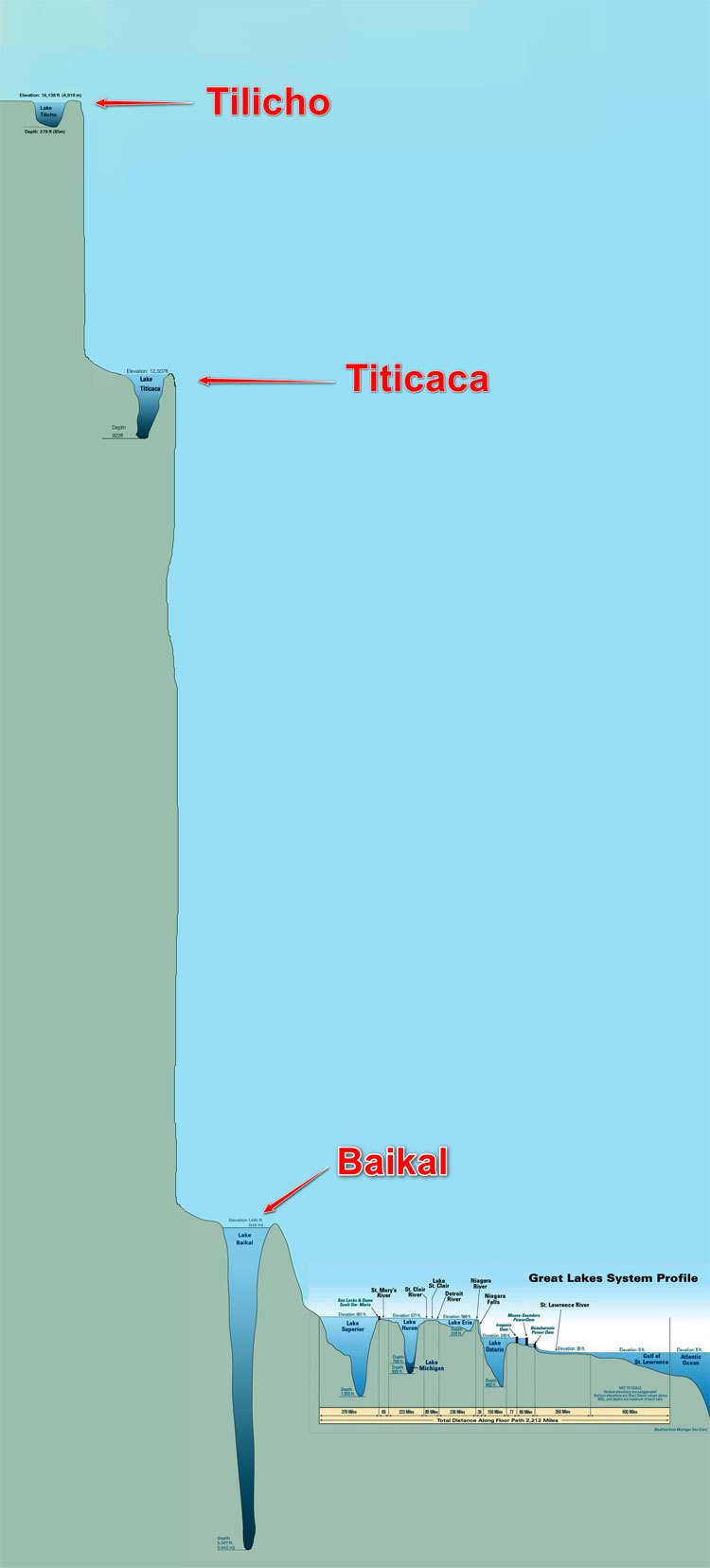
The answer to its formation lies deep within the Earth, in the tectonic dance of the Andean orogeny. Millions of years ago, the collision of the South American and Nazca Plates created immense pressure that pushed the land upward, forming the towering Andes Mountains. Lake Titicaca was formed through tectonic shifts and the uplift of the Andes, combined with glacial activity that filled the basin over time.
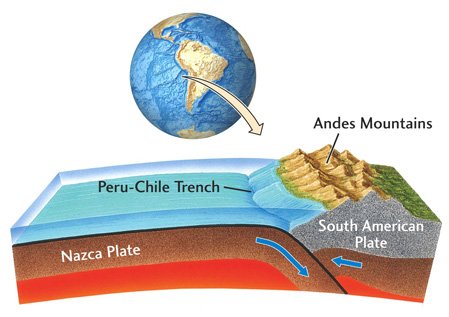
Lake Titicaca Depth
Plunging to depths of up to 281 metres (922 feet), Lake Titicaca is South America’s largest and deepest navigable lake. Stretching 190 kilometres (118 miles) in length and up to 80 kilometres (50 miles) wide, its vast waters resemble an inland sea, framed by the towering peaks of the Andes.
The lake is classified as an “endorheic basin,” meaning it has no outlet to the sea. Instead, water from Lake Titicaca either evaporates or seeps into the ground, creating a mineral-rich environment. The geological isolation and high altitude have led to a distinctive ecosystem where species have evolved to thrive in the low-oxygen waters.
Unlike many endorheic basins, where evaporation creates salty conditions, Lake Titicaca’s waters remain fresh yet mineral-rich – a balance that supports unique species adapted to high-altitude life.
From Geological Forces to Ancient Mysteries
Looking out at the lake from my bus window, it was humbling to think about the immense forces that shaped this place. The Andean peaks, the high plains, and the vast expanse of the lake itself are the result of Earth’s restless energy, sculpting the landscape over epochs. It felt like stepping into a geological wonder, shaped by time, tectonics, and ancient glaciers – a site that has witnessed the Earth’s ever-changing face and holds mysteries older than human history.
The geology of Lake Titicaca tells the story of tectonic collisions and glaciers, but the lake also holds cultural legends and scientific mysteries waiting beneath its waters.
4 Lake Titicaca Mystery: Legends, Secrets, and Science
Lake Titicaca is renowned for its breathtaking scenery and high-altitude location, but it’s also steeped in ancient legends and unsolved mysteries. Some of the most intriguing secrets include the tales of lost underwater cities like Wanaku, reports of strange lights and UFO sightings, and ongoing scientific discoveries of ancient temple ruins hidden beneath the lake’s surface. These stories have captivated explorers for centuries, and each legend offers a glimpse into the rich cultural and historical tapestry of the region. Let’s explore some of the most fascinating mysteries that surround this legendary lake, starting with the lost underwater cities.
Lost Underwater Cities of Lake Titicaca
One of the most enduring legends of Lake Titicaca is the story of lost underwater cities, particularly the ancient city of Wanaku. According to local lore, this city was once a thriving Inca settlement, now submerged beneath the lake’s deep waters. In recent years, underwater explorations have revealed evidence of ancient stone structures, including temples, terraces, and roads, suggesting there may be truth to the legend.
The Sacred Island of the Sun
In Inca mythology, Lake Titicaca holds a central place as the birthplace of the sun. The Isla del Sol (Island of the Sun) is believed to be the spot where the first Inca king, Manco Cápac, emerged, sent by the sun god Inti to establish the Inca civilization. Archaeological sites on the island include ancient temples and stone carvings that reflect its spiritual importance.
Lake Titicaca UFO Sightings and Strange Phenomena
Lake Titicaca has also become a hotspot for reports of unidentified flying objects (UFOs) and strange lights in the sky. Locals share stories of unexplained lights, sometimes attributed to the lake’s unusual electromagnetic environment. While there is no scientific consensus, the stories have only added to the lake’s mystique.
Lake Titicaca Mystery: Bioluminescence Rumors Explained by Science
Travelers sometimes whisper about glowing waters on Lake Titicaca, describing flashes of light rippling across its surface. Could this legendary lake truly be bioluminescent? The science says no – at least not in the way we see glowing bays in Puerto Rico or the Maldives. Instead, scientists suggest that unusual reflections of moonlight on the waves, or the occasional presence of phosphorescent algae, may explain the sightings.
While no evidence of sustained bioluminescence has been found, the stories endure – blending natural science with local folklore, and adding yet another layer of mystery to this already enigmatic lake.
Ongoing Scientific Explorations
Beyond the legends, scientists continue to explore the depths of Lake Titicaca, uncovering new findings that challenge our understanding of the region’s history. In 2000, a team of archaeologists discovered ruins of an ancient temple complex underwater, believed to date back over 1,500 years. These discoveries hint at a sophisticated pre-Inca civilization and raise questions about what other secrets the lake might still hold.
New technologies, from sonar mapping to drone surveys, continue to reveal the hidden layers of Lake Titicaca – suggesting that many of its mysteries are still waiting to be uncovered.
Yet not all of Lake Titicaca’s mysteries lie underwater, as some are written in the very air, in the thin atmosphere and high-altitude climate that shapes life around the lake.
You Might Also Like:
- Journey to the Dead Sea: Science & History Unveiled – Float effortlessly in the Dead Sea’s hypersaline waters and uncover the geological forces and cultural history behind this unique salt lake.
- Mount Bromo Volcano: Geology, Caldera & Eruption Science – Trek across Indonesia’s Sea of Sand at dawn and uncover the explosive geology behind Mount Bromo’s active volcanic caldera.
- Kawah Ijen: Midnight Trek, Blue Fire & Volcano Science – Hike into the night to witness Kawah Ijen’s rare blue fire and learn the volcanic chemistry behind this otherworldly phenomenon.
5 Lake Titicaca Altitude: Climate and Environmental Challenges
As the bus made its way around the lake’s edge, the landscape opened up to endless views of blue water and distant mountains. But while the scenery was breathtaking, I was also literally out of breath. Lake Titicaca rests at an altitude of 3,812 metres (12,507 feet), a height that demands a slower pace and constant reminders to inhale deeply. The effects of the altitude were unmistakable. Just like in La Paz, every movement here felt slightly laboured, and occasional lightheadedness crept in, as if the thinner air was playfully reminding me I was miles above sea level.
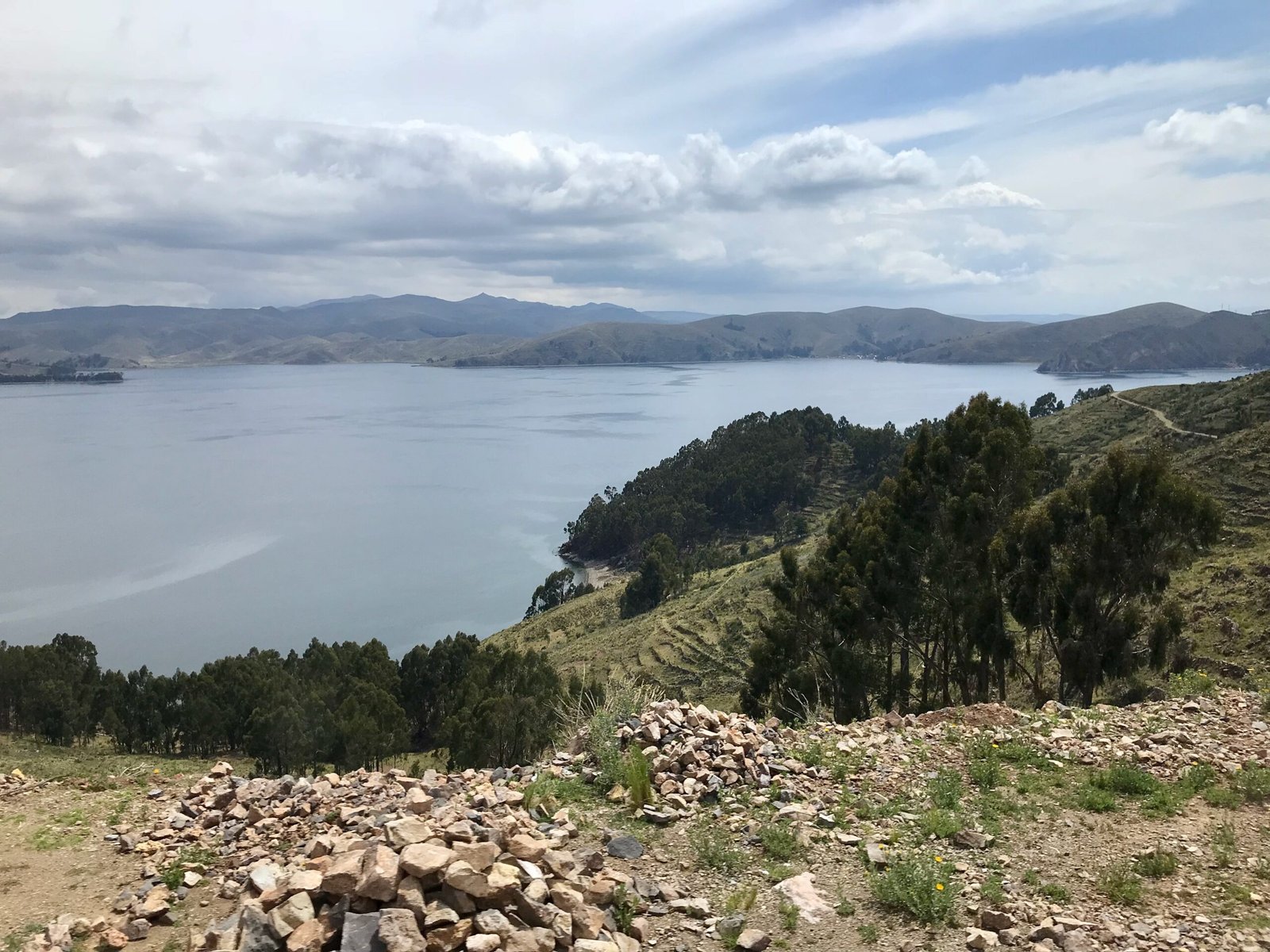
At this elevation, even the weather takes on unique characteristics. The high altitude means cooler temperatures throughout the year, with strong sunlight cutting more directly through the thinner atmosphere.
Yet Lake Titicaca softens the extremes. Acting as a thermal regulator, it moderates temperatures and creates a microclimate that’s milder than the surrounding highlands. During the day, the sun was intense, almost unrelenting, making me grateful for any chance to duck into the shade. But as the sun dipped behind the mountains, the temperature dropped sharply, transforming the shoreline into a chilly realm as night fell.
The impact of the altitude isn’t just something felt by visitors – it has shaped the way of life here for generations. Farmers cultivate crops like potatoes and quinoa adapted to high elevations, just as the people themselves are. Local communities have developed physical adaptations that allow them to thrive where oxygen is scarce. It’s humbling to see how life bends to such extremes, and how, in a landscape where nature’s challenges are constant, human resilience shines through.
Reflecting on the altitude, I began to appreciate the people who lived here year-round. While I could always retreat to sea level, the locals had mastered life at the lake’s edge, turning environmental hardship into tradition. For them, the altitude wasn’t an obstacle but part of what made this place home – a home built on adaptation, resilience, and a deep connection to Lake Titicaca’s high-altitude landscape.
As the bus rolled on, I realized altitude wasn’t the only challenge here – even crossing the lake demanded adaptation.
6 San Pablo de Tiquina: Crossing the Strait of Lake Titicaca
Our journey took a brief, unusual pause at San Pablo de Tiquina, a narrow stretch of Lake Titicaca where the only way forward was to cross a short distance by boat. This wasn’t your typical bridge crossing. Instead, we were required to disembark, with the bus making the journey separately on a wooden barge. As I watched the barge bobbing on the water, it became clear why we weren’t allowed to stay on the bus for this part – this was no sleek ferry, but a rough-hewn transport method that looked like it had been plying these waters for generations.
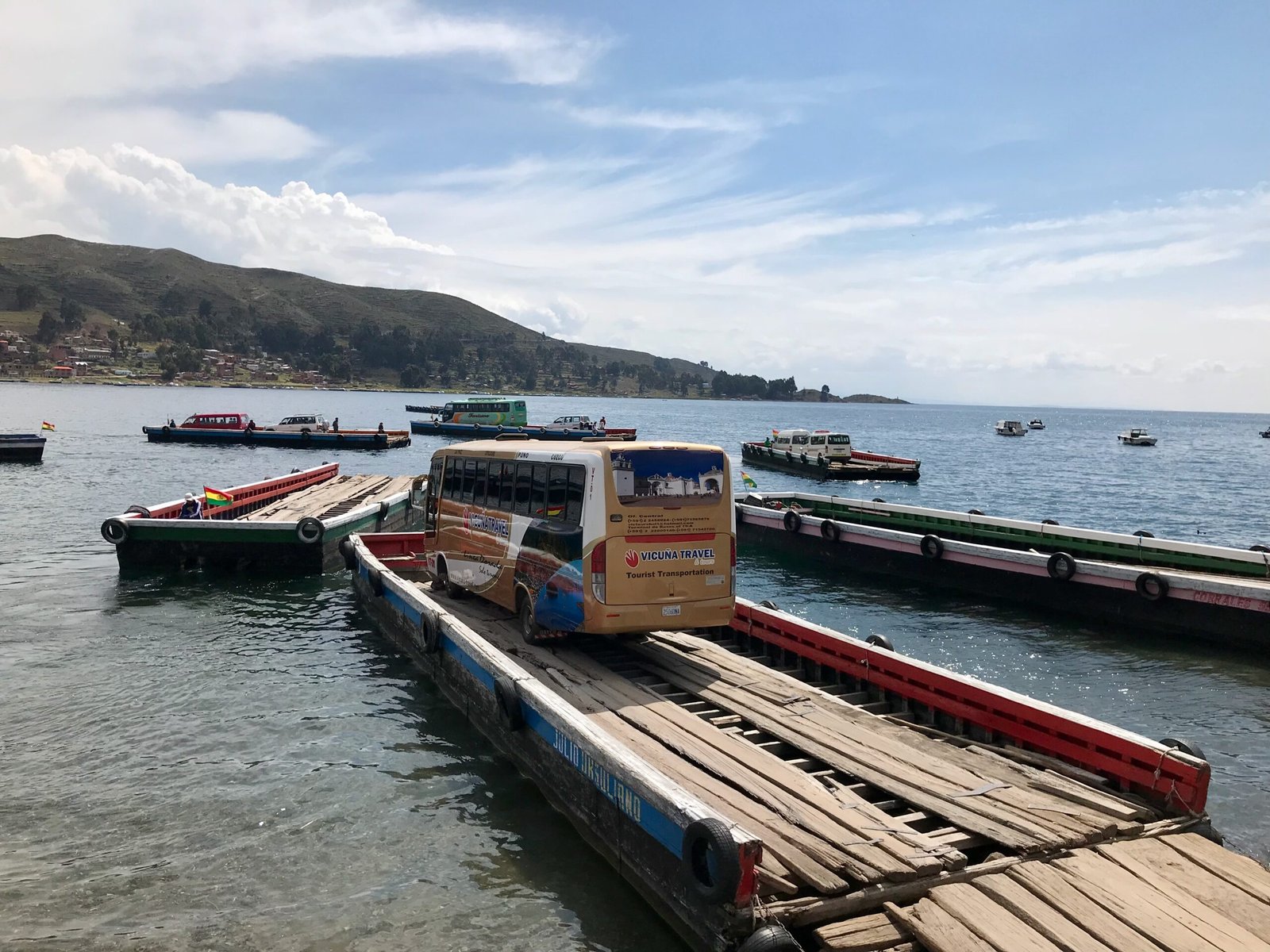
The boat ride itself was simple but gave me a fresh perspective on the lake. Up close, the water’s expanse felt even more impressive, stretching in all directions against a mountainous backdrop. I watched as small fishing boats floated nearby, their occupants appearing as tiny specks against the vastness of the lake. Here, Lake Titicaca was more than a beautiful sight; it was a lifeline for locals, used for everything from fishing to transporting goods and people between isolated communities. The lake’s calm waters seemed almost serene, but knowing its icy depths and winds, I could sense its underlying power.
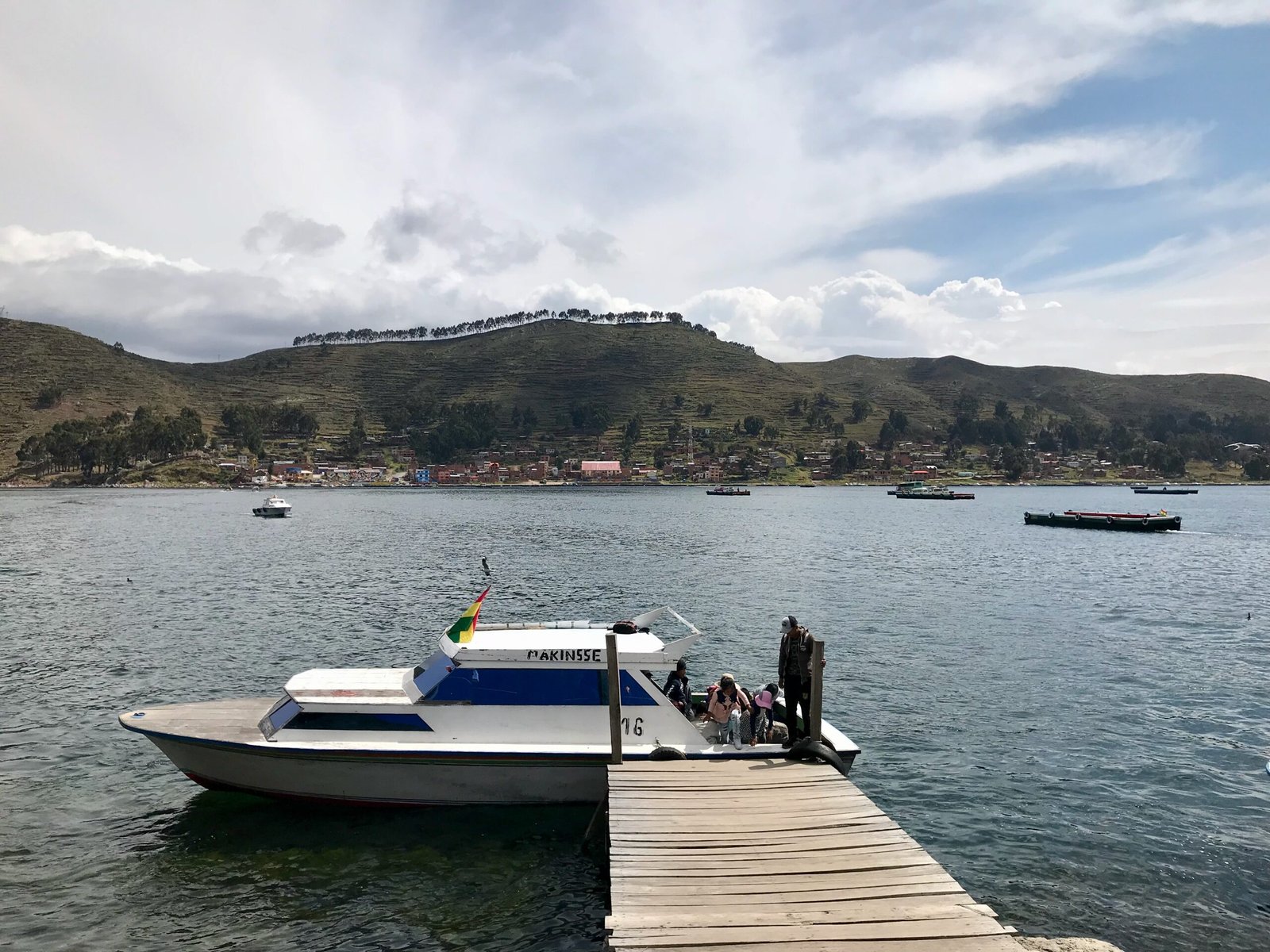
Crossing the lake reminded me that this wasn’t just a scenic wonderland but a resource deeply embedded in local life. Every part of the lake served a purpose for those who lived around it – whether it was the fishermen who navigated its waters daily or the boats carrying people and goods across its surface. There was a timelessness to this scene, as if Lake Titicaca itself was a steadfast, reliable presence that had been connecting these shores for centuries.

Once the bus made its way across, we continued along the lake’s edge, the landscapes becoming more dramatic with each passing mile. It was as if the lake had decided to reveal itself in stages, each view a new reminder of its scale and significance. It struck me that for all the scientific curiosities about Lake Titicaca, its role in human lives – from ancient civilizations to present-day communities, was perhaps its most profound story.
Beyond the strait lay Copacabana, a lakeside town that has long been Lake Titicaca’s cultural heart.
7 Copacabana, Bolivia: Life and Culture on Lake Titicaca’s Shore
When the bus pulled into Copacabana, Bolivia, I could tell this was a town that revolved around the lake. Situated right on Lake Titicaca’s shores, Copacabana seemed to thrive on its connection to the water. After our long bus ride, we had a two-hour stopover here, giving me just enough time to stretch my legs and explore the town. Being Christmas Eve, there was a festive atmosphere in the air, and the waterfront was alive with families enjoying picnics and tourists mingling with locals.
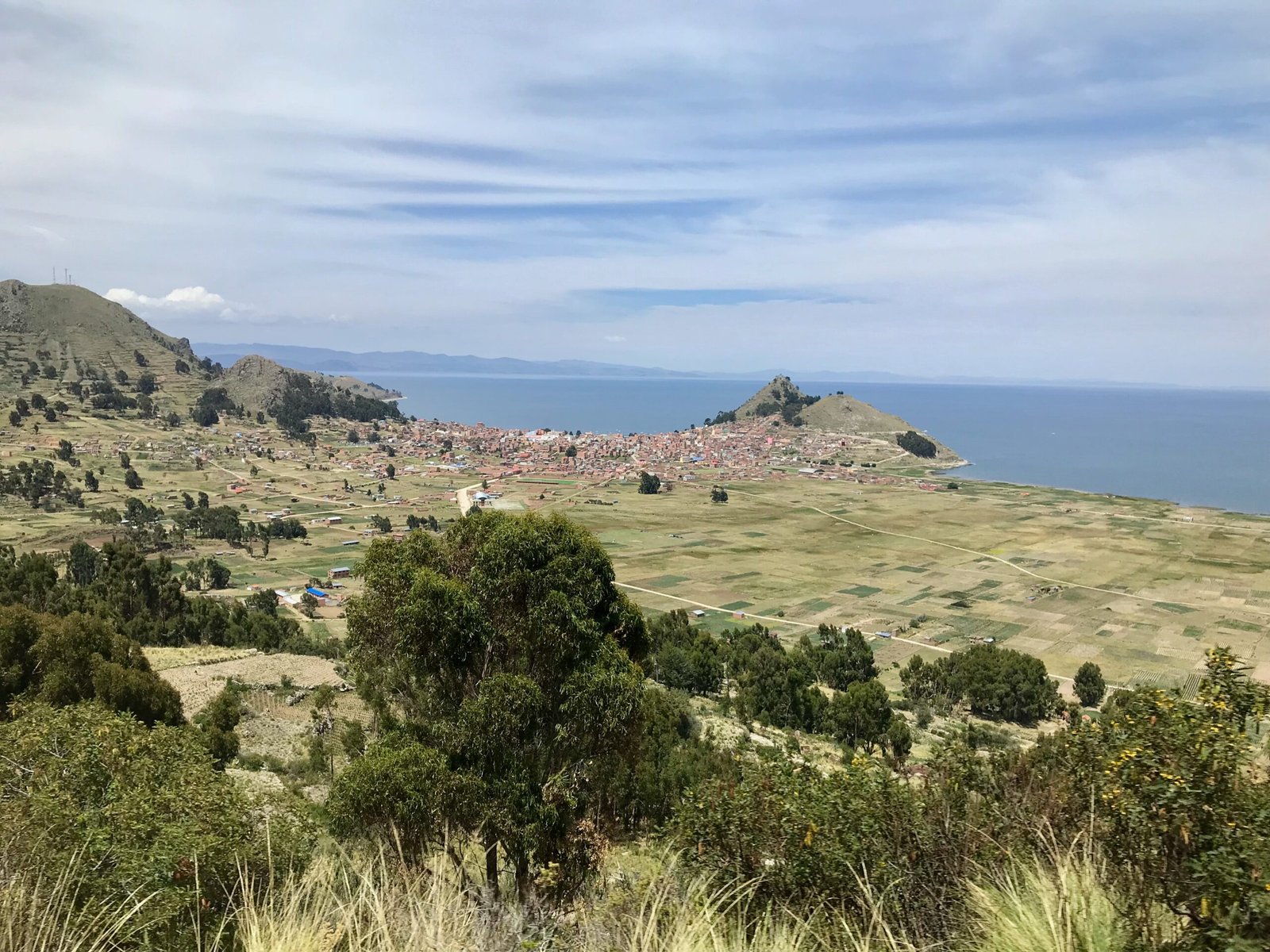
I decided to treat myself to a pizza, the warmth of melted cheese a small luxury in this chilly, high-altitude setting. Sitting there with my pizza by the lake, I watched as boats of all shapes and sizes gently bobbed along the shoreline. Many of these vessels were no-frills fishing boats, worn and weathered by the elements, while others seemed intended for sightseers like myself, their bright colours reflecting in the water. Copacabana seemed like a place where visitors and locals crossed paths, united by their shared admiration for this legendary lake.

The town itself had an old-world charm, with modest buildings painted in earthy tones and narrow streets winding up the hills. Walking through Copacabana felt like a journey through time. Some of the residents here still followed traditional ways of life, drawing from the lake for fishing, agriculture, and religious ceremonies. In fact, Lake Titicaca has long been revered in Andean culture, seen as a sacred body of water with links to Inca mythology. According to legend, the first Inca emperor, Manco Cápac, was born from the lake, a story that adds a layer of mystique to the lake’s blue expanse.
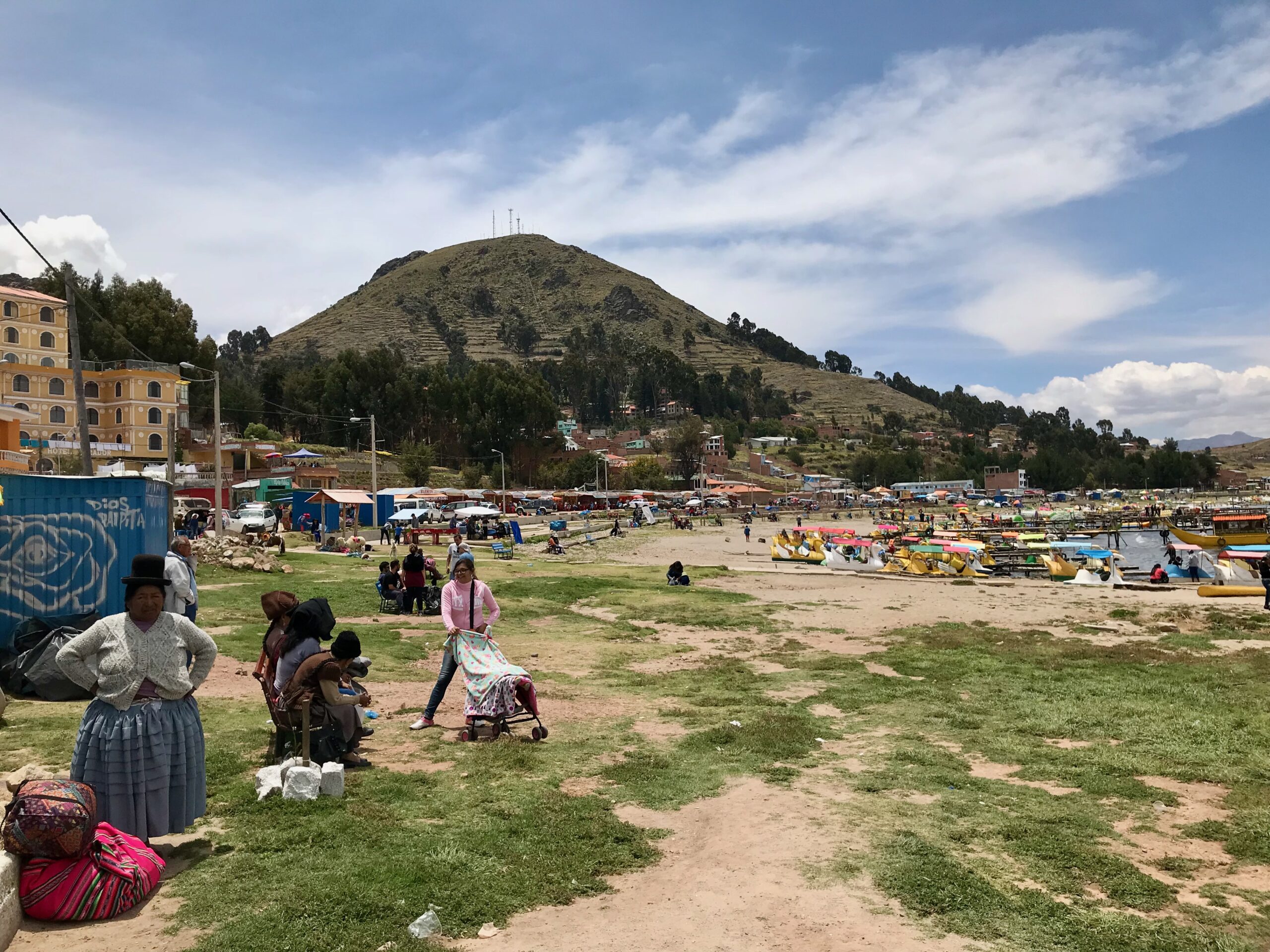
The town’s vibrant community and connection to tradition made me feel like I was witnessing a living heritage, where past and present converged. People here had learned to coexist with the lake, and it was clear that Lake Titicaca wasn’t merely a backdrop to their lives – it was the pulse of the region, shaping their customs, livelihoods, and celebrations. Watching the town in its daily rhythm, I felt fortunate to catch this glimpse of life on Lake Titicaca’s shores, a place where the landscape and local culture were intricately woven together.
8 Lake Titicaca’s Floating Islands of the Uros People
On the western side of Lake Titicaca, near Puno, entire communities live on floating islands built from totora reeds. Known as the Uros people, they have adapted to life on the lake for centuries by layering bundles of reeds into buoyant platforms that support their homes, watchtowers, and boats.
Walking across one of these islands feels like stepping onto a giant sponge – soft, springy, and ever-shifting beneath your feet.
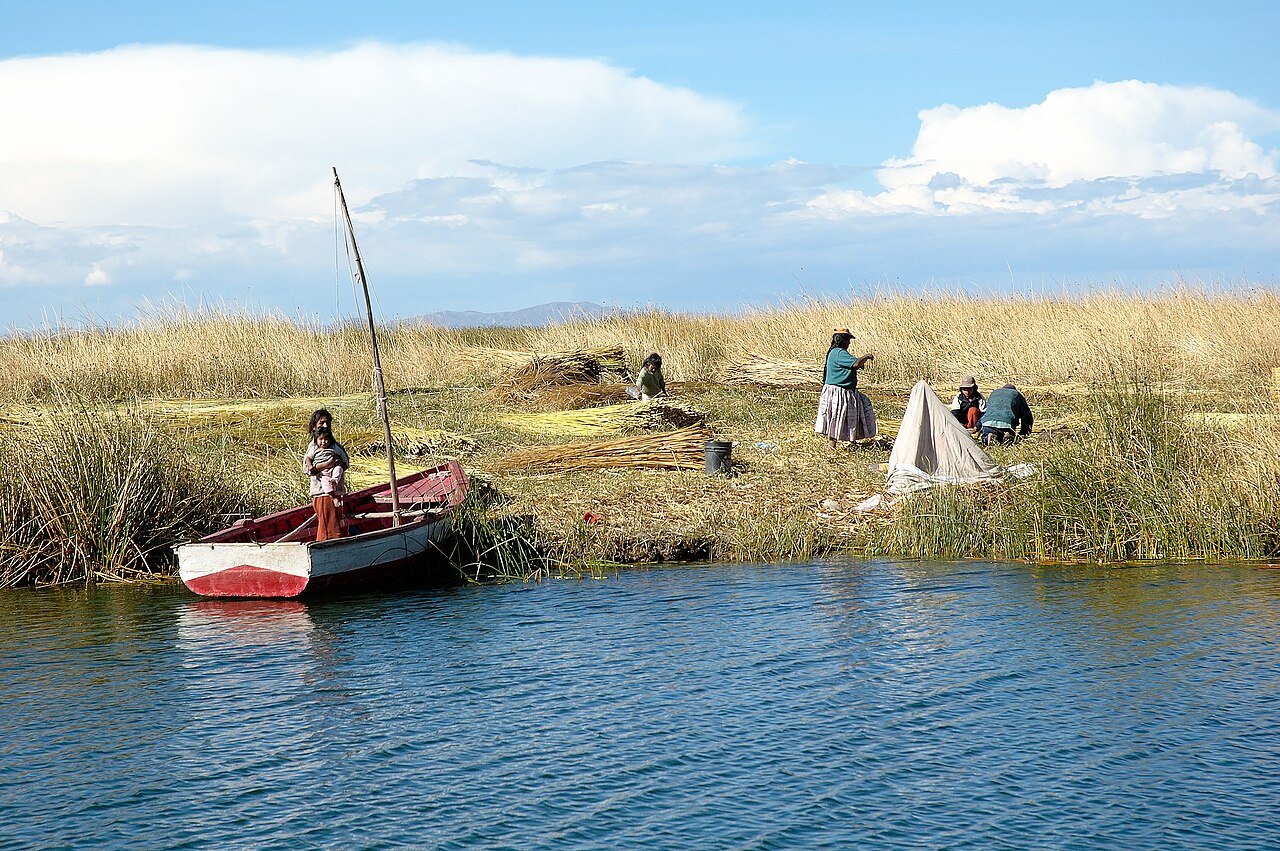
For the Uros, the reeds are more than building material; they’re food, medicine, and even fuel. While modern tourism now plays a role in their livelihood, the tradition of reed island living continues as a remarkable example of human ingenuity in one of the world’s most challenging environments.
But the lake’s human ingenuity is only half the story – beneath the surface, an equally remarkable ecosystem thrives.
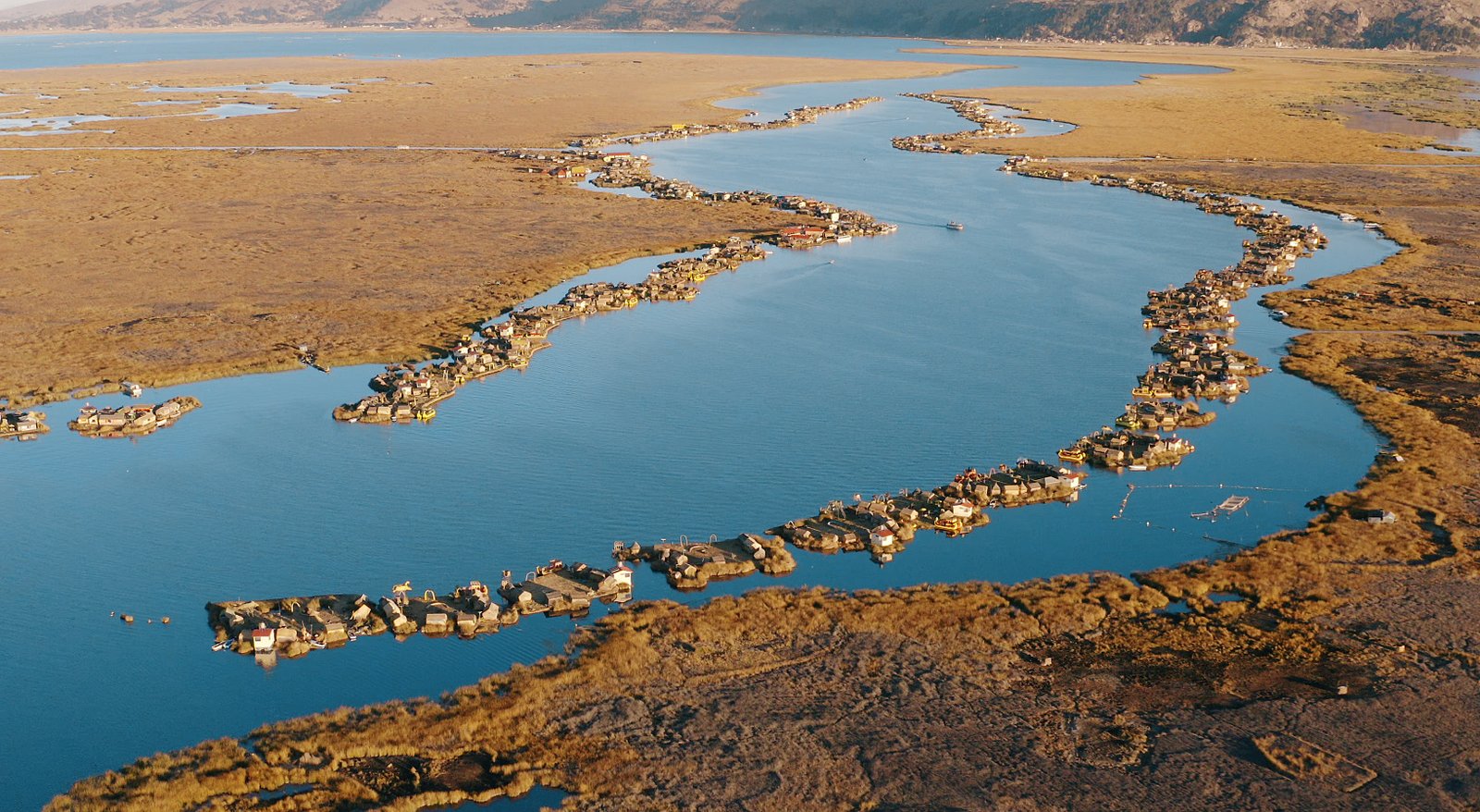
9 Lake Titicaca Wildlife and Unique Aquatic Ecosystem
Lake Titicaca isn’t just a geological marvel or cultural heartland – it’s also a habitat unlike any other. As I looked out over its vast blue waters, I couldn’t help but think about what lay beneath the surface. Despite its high altitude and cold waters, Lake Titicaca hosts a diverse array of aquatic species that have adapted to thrive in this unique environment. The lake’s ecosystem has evolved in isolation for millennia, resulting in a high rate of endemism – meaning many of the species found here exist nowhere else on Earth.
The Titicaca Water Frog: Lake Titicaca’s Strangest Resident
One of the lake’s most fascinating residents is the Titicaca water frog, a creature that has become almost mythical in its own right. This giant amphibian can reach impressive sizes and has developed a remarkable adaptation to the lake’s low-oxygen waters: loose, baggy skin that absorbs oxygen directly, allowing it to breathe even at such high altitudes.
Known colloquially as the “scrotum frog” for its distinctive appearance, it stands as a symbol of the lake’s adaptability and a reminder of how life can find a way, even in the harshest conditions.
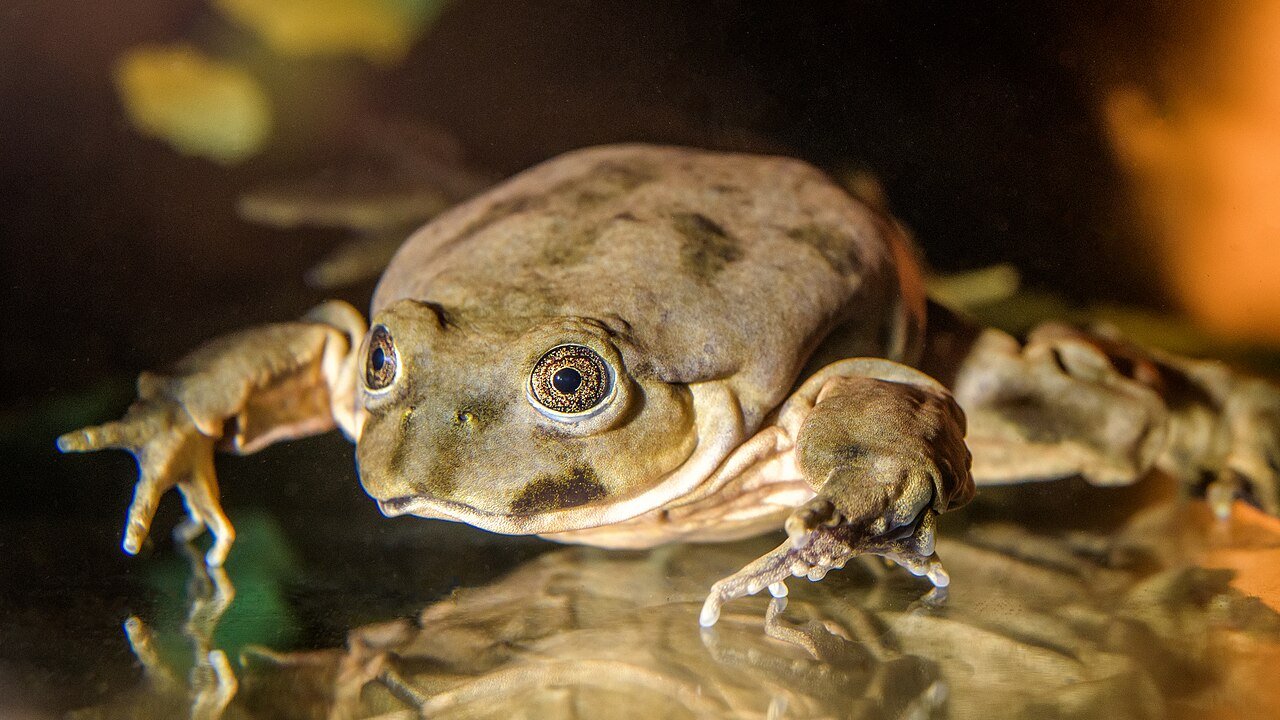
Unfortunately, the frog’s numbers have dwindled in recent years, partly due to habitat loss and pollution, making its future uncertain. Conservation efforts are underway, but its decline highlights the fragility of Lake Titicaca’s ecosystem and the urgent need to protect it.
Orestias Killifish: Endemic Fish of Lake Titicaca
In addition to the Titicaca frog, the lake is home to several species of fish, including the endemic Orestias fish, or “killifish”. Adapted to the cold, high-altitude waters, these fish play a crucial role in the lake’s food chain, supporting the local fishing communities that rely on them as a staple. It struck me that the lake’s ecosystem is a finely tuned balance, one that has sustained local communities for centuries but also faces modern challenges.
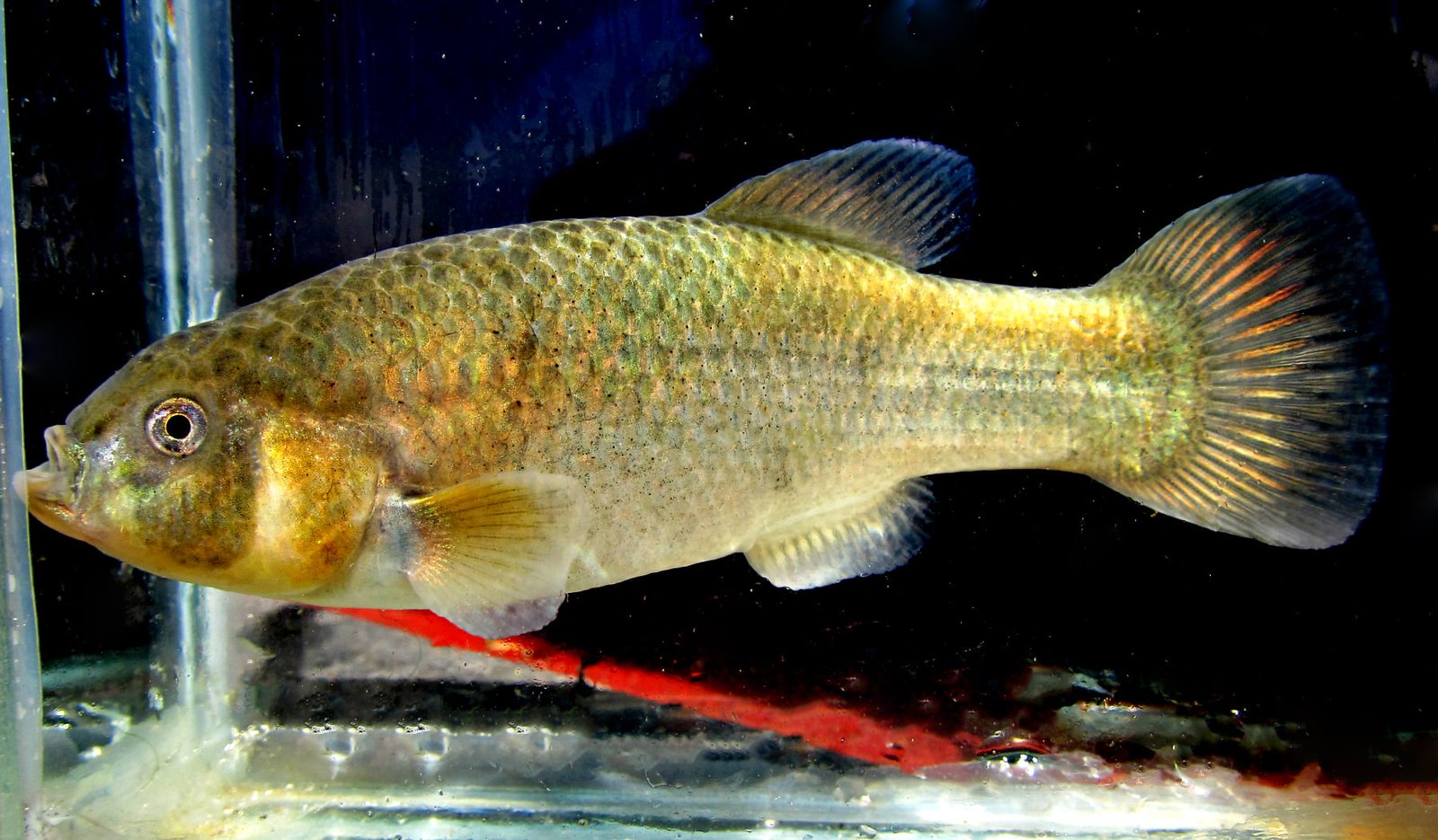
Seeing Lake Titicaca’s waters from the shoreline, it was easy to understand why the lake had earned a special place in Andean mythology and conservation efforts alike. Here, life endures in a form that’s both fragile and tenacious, dependent on this delicate high-altitude ecosystem. For all its beauty and scale, the lake’s true wonder lies in the complex web of life beneath the surface, a reminder that even the most isolated corners of our world are home to intricate ecosystems worthy of protection.
10 Practical Travel Tips for Visiting Lake Titicaca
If you’re planning to visit Lake Titicaca, there are a few key things to keep in mind to make the most of your journey. The high altitude and remote location add unique challenges, but a bit of preparation will go a long way.
- Acclimate to the Altitude: Lake Titicaca sits at over 3,800 meters (12,500 feet) above sea level, so Lake Titicaca altitude sickness is a real possibility. Spend a few days in La Paz or Cusco to help your body adjust before venturing to the lake. Hydrate well, avoid alcohol, and consider chewing coca leaves or drinking coca tea, a traditional Andean remedy for altitude.
- Pack for a Range of Temperatures: The high-altitude climate can be unpredictable. Days are often sunny and warm, but temperatures drop sharply at night. Dress in layers and pack sunscreen, a hat, and sunglasses to protect yourself from the intense sunlight.
- Prepare for Basic Facilities: In some areas around the lake, particularly in smaller towns, facilities may be quite basic. Cash is essential, as ATMs aren’t always available, and credit cards may not be accepted. Be prepared for limited Wi-Fi in remote areas.
- Respect Local Customs: Lake Titicaca holds spiritual significance for the local Indigenous communities, particularly the Aymara and Quechua people. Show respect for local customs and sacred sites, and always ask permission before photographing people or places.
- Bring Motion Sickness Remedies: The roads around Lake Titicaca are winding and can be bumpy. If you’re prone to motion sickness, pack remedies to stay comfortable during the journey.
11 Pro Tips for the Science Traveler
For the science traveler, Lake Titicaca offers a range of opportunities to engage with its unique environment and history on a deeper level. Here are some “pro tips” to enhance your experience:
- Brush Up on Geology: To fully appreciate Lake Titicaca’s formation, spend some time learning about the Andean orogeny and the tectonic forces that uplifted the lake to its current altitude. Familiarity with basic geological terms will help you understand the local landscape better.
- Observe Aquatic Life at Isla del Sol: If you have time, make a trip to Isla del Sol, an island in the Bolivian part of the lake. Known for its connection to Incan mythology, it’s also a prime spot to learn about the lake’s aquatic ecosystem. The clear waters near the island are great for observing the Titicaca water frog and other endemic species.
- Use a High-Altitude Weather App: Track real-time weather and monitor UV levels with a high-altitude weather app, such as The Weather Network. This is especially helpful at Lake Titicaca, where high UV exposure can be underestimated due to the cooler temperatures.
- Learn Basic Aymara Phrases: Aymara, one of the native languages spoken around Lake Titicaca, connects you more closely with the local culture. Learning a few basic phrases can deepen your experience and foster goodwill with the locals.
- Experience the Lake by Kayak: For a closer, more intimate experience with Lake Titicaca, consider renting a kayak at Copacabana or on Isla del Sol. Kayaking allows you to explore the lake’s tranquil waters up close, access hidden coves, and enjoy unobstructed views of the Andes from the water’s edge. It’s an ideal way for the science traveler to observe local flora and fauna, while gaining a fresh perspective on the lake’s expansive beauty.
12 Personal Reflection
As our journey continued toward Puno, I realized Lake Titicaca is more than a lake – it’s an improbable high-altitude paradise where nature, history, and culture converge. From the tectonic forces that raised the Andes to the communities that thrive along its shores, it stands as a testament to resilience and ingenuity.
Seeing the lake up close, I understood why it holds such power in Andean mythology – a sacred site, a giver of life, and a witness to centuries of human history. My time here was more than a scenic stop; it was proof that even in Earth’s harshest places, life endures and beauty thrives.
Some links in this story are affiliate links. If you choose to buy through them, Curious Don may earn a small commission – at no extra cost to you. It helps support more science travel stories like this.

